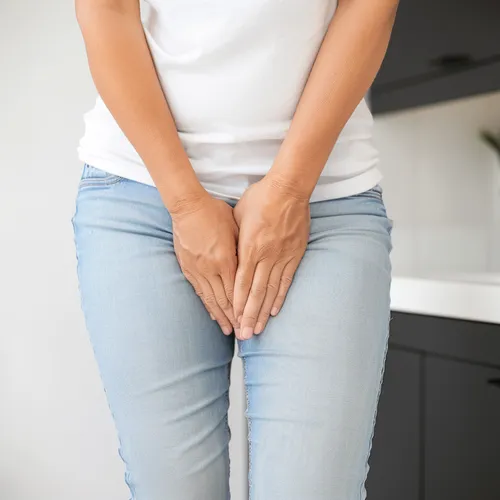You may have read or heard about water infections, sometimes referred to as a urinary tract infection or UTI, cystitis, or bladder infection. If you’ve never experienced one of these infections, you may not understand exactly what a UTI is or how painful and debilitating it can be.
Symptoms of water infection are troublesome to anyone affected by them, but women are ten times more likely to acquire water infections than men, partly due to the anatomy of the female urinary tract. One out of every four women will be affected by a water infection at least once in their lives, and some women may experience them frequently. These types of infections can be treated with antibiotics, but they are not always needed.
Signs Of A Water Infection
- Water infections cause inflammation of the urinary tract, particularly the bladder and urethra, which causes the following symptoms, which may be more common in women:
- Intense urge to urinate frequently
- Need to get up several times a night to urinate
- Passing small amounts of urine at a time
- Intense pain or burning during urination, especially near the end
- Lower abdominal pain
- Bloody or cloudy urine
- Strong and/or unpleasant smelling urine
Conventional medicine recommends a course of antibiotics as soon as a water infection is diagnosed. As we become more aware of the dangers inherent in antibiotic overuse, many of us are looking for natural and safe ways to treat water infections before they can progress into a potentially dangerous kidney infection.
Try D-Mannose
Your grandma probably drank lemon barley when she thought she might be developing a water infection. Today, some women who are especially prone to these infections keep a jug of cranberry juice in the refrigerator for the same purpose. Turns out, they were right. It also turns out that D-Mannose can also help support a healthy bladder and prevent water infections.
D-Mannose helps to support bladder health by increasing mannose in the urine. Naturally healthy bladders contain more mannose than unhealthy bladders and adding supplementary mannose with a product such as D-Mannose can help improve bladder health.
Studies have shown D-Mannose to help prevent infections in people of all ages and to stop symptoms when they start. D-Mannose offers quick relief from the painful symptoms associated with these infections.
Buy a UTI Test Kit
If you are concerned that you may have a water infection, the best thing to do is to go and see your doctor, especially if you are prone to frequent infections. A home test kit is available on this website that will allow you to test for UTIs at home, allowing you to monitor your condition on a regular basis.
Causes of UTIs
UTIs are caused by bacteria, most commonly E. coli from the gastrointestinal tract, entering and infecting the urinary tract. Women are more prone to UTIs than men for several reasons:
- The urethra is shorter in women, allowing bacteria quicker access to the bladder
- The opening of the urethra is closer to the anus in women, increasing bacteria transfer
- Sexual intercourse can transfer bacteria to the urethral opening
- Pregnancy increases UTI risk due to hormonal changes and increased bladder pressure
In addition to gender, other UTI risk factors include:
- Family history of UTIs
- Diabetes
- Blockage of the urinary tract from kidney stones, tumors, etc
- Compromised immune system
- Use of spermicides
- Use of diaphragm for birth control
Diagnosing a UTI
If you suspect you have a UTI based on symptoms, it’s important to see your doctor for an accurate diagnosis. They will ask about your symptoms and medical history. Diagnostic tests may include:
- Urinalysis – Checks for bacteria, blood cells, and pus in the urine
- Urine culture – Cultures bacteria from a urine sample to identify type and best treatment
- Imaging – Ultrasounds or CT scans check for abnormalities or blockages
- Without a proper diagnosis, the infection could worsen or spread to the kidneys. Catching and treating early is key.
Treating UTIs
UTIs are usually treated with antibiotics, taken orally for 3-7 days. Treatment is aimed at eliminating infection and preventing recurrence.
First-line antibiotics usually include:
- Trimethoprim/sulfamethoxazole – Goes after both Gram-positive and negative bacteria
- Fosfomycin – Single dose is effective for uncomplicated UTIs
- Nitrofurantoin – Concentrated in urine to target infection
Resistance to certain antibiotics may require second-line drugs like fluoroquinolones or cephalosporins. More severe kidney infections may need IV antibiotics.
In addition to antibiotics, recommendations to help resolve symptoms faster include:
- Stay hydrated – Drink lots of fluids, especially water
- Urinate frequently – Don’t hold it, flush bacteria from bladder
- Take over-the-counter pain relievers – For fever, discomfort, etc
- Consider probiotics – To prevent yeast infection from antibiotics
- Follow up with your doctor after finishing antibiotics to ensure the infection cleared. Repeat infections may require further testing and preventative care.
Alternative and Natural UTI Remedies
While antibiotics remain the standard UTI treatment, increasing bacterial resistance is causing more people to explore natural therapy options. Popular natural alternatives include:
Cranberry Juice/Extract: Compounds called proanthocyanidins prevent bacteria from adhering to the walls of the bladder and urethra. Most effective in juice form vs supplements.
Probiotics: Restore healthy gut flora balance, which can reduce recurrence. Especially helpful after antibiotic treatment. Look for lactobacillus strains.
D-Mannose: Natural sugar prevents bacterial adhesion and also promotes urinary flow. Effective for prevention and relief of mild UTI symptoms.
Vitamin C: Boosts immune function to help fight infection. Acts as a urinary acidifier and antibacterial. Cranberry juice is high in vitamin C.
Herbs: Certain herbs like bearberry (uva ursi), goldenseal, and buchu have antibacterial properties to fight infection. Use with caution.
Essential Oils: Oils like oregano, thyme, sandalwood and tea tree have antimicrobial effects against UTI-causing bacteria. Use topically or in bath.
Always check with your doctor before using natural remedies, especially if symptoms persist or get worse. They may recommend combining with antibiotics or prescription medications. While these alternatives show promise for UTI treatment and prevention, more research is still needed.
Treating Chronic and Recurrent UTIs
For some individuals, urinary tract infections can become a chronic, recurring problem. If you experience frequent UTIs, defined as two or more within six months or three or more within a year, your doctor may recommend additional testing and preventative measures. Chronic UTIs can lead to kidney damage if left untreated, so prompt management is crucial.
Some potential causes of recurrent UTIs include:
- Abnormalities in the urinary tract, such as kidney stones or structural issues
- Incomplete treatment of previous infections
- Suppressed immune system
- Inadequate bathroom hygiene habits
- Spermicidal contraceptives
Your doctor may order imaging tests like an ultrasound or CT scan to check for anatomical abnormalities contributing to recurrences. They may also take a urine culture to analyze bacteria and prescribe targeted antibiotics.
In addition to antibiotics during active infections, preventative treatments could include:
- Low-dose vaginal estrogen therapy (for postmenopausal women)
- Methenamine hippurate to acidify urine
- Immunoactive prophylactic therapy to boost immune response
- D-Mannose powder to prevent bacterial adhesion
How Does D-Mannose Prevent UTIs?
D-Mannose is a simple sugar related to glucose that occurs naturally in some fruits like cranberries. When ingested as a supplement, D-Mannose is filtered by the kidneys and excreted in the urine.
The unique structure of D-Mannose closely resembles the attachment sites on bladder cells that E. coli bacteria try to latch onto. By flooding the bladder with D-Mannose molecules, it acts as a “decoy” to which the bacteria bind instead of attaching to bladder walls. This allows the bacteria to be harmlessly flushed out when you urinate.
Unlike cranberry juice or extract which contains variable D-Mannose levels, pure D-Mannose powder concentrates the key UTI-fighting compound. Studies show D-Mannose is just as effective as antibiotics for treating acute, uncomplicated UTIs while avoiding antibiotic resistance or side effects.
For chronic UTI sufferers, taking D-Mannose daily or at the first symptom onset may prevent infections before they take hold. It can be used long-term with virtually no risk of side effects.
Managing UTI Triggers
While not a cure for chronic UTIs, making certain lifestyle adjustments may help reduce recurrence frequency by minimizing common UTI triggers:
- Practice good toilet hygiene – Wipe front to back, urinate after sex
- Avoid irritants like scented products, douches, spermicides
- Stay hydrated and urinate frequently
- Wear loose cotton underwear/clothing
- Manage conditions like diabetes that increase UTI risk
- Boost immunity with probiotics, vitamin C, zinc
Identifying your personal UTI triggers through a food/activity diary can also be helpful. Dietary culprits like caffeine, alcohol, and sugary foods may exacerbate UTI symptoms in some individuals.
By combining preventative strategies like D-Mannose, lifestyle adjustments, and prompt antibiotic treatment of acute infections when needed, many women find they can successfully manage chronic, recurrent UTIs.
Lifestyle Changes to Prevent Recurrent UTIs
For those plagued by chronic repeat infections, making certain lifestyle adjustments can help reduce UTI frequency by minimising risk factors:
- Urinate before and after intercourse to flush bacteria
- Stay hydrated and urinate when needed to flush out bacteria
- Wipe front-to-back after using the toilet
- Avoid potentially irritating feminine products – douches, sprays, etc
- Consider switching contraceptive methods, like diaphragms
- Wear cotton underwear and loose clothing
- Maintain healthy gut flora with probiotics and fermented foods
- Boost immunity with vitamin C and zinc
- Practice healthy hygiene and sexual habits
- Making simple changes to your habits and diet can go a long way in preventing those painful UTI flare ups. Always discuss chronic UTIs with your doctor to rule out underlying causes.
When to See a Doctor
Most uncomplicated lower UTIs can be treated with a short course of antibiotics and clear up on their own. However, it’s important to monitor symptoms and see a doctor if you experience:
- Symptoms that persist after treatment
- Fever over 101°F, chills
- Pain in your back or side
- Nausea, vomiting
- Blood in the urine
- Signs the infection may have reached the kidneys
Antibiotic resistance or undiagnosed complications can lead to kidney damage and sepsis if left untreated. Recurrent infections may also warrant further testing for causative factors. Don’t hesitate to follow up with your physician if your UTI isn’t improving or comes back shortly after finishing treatment.
UTIs in Men
While women are disproportionately prone to UTIs, they can and do occur in men as well. Some key differences:
- Enlarged prostate gland in older men increases UTI risk
- Structural issues like kidney stones or blockage raise risk
- Certain medical procedures can introduce bacteria into the urinary tract
Men over age 50 account for up to 30% of UTIs that require hospitalization. Symptoms are similar but may also include:
- Rectal pain
- Urgency but inability to urinate
- Painful ejaculation
Men should always be evaluated for underlying causes that could complicate treatment. Rapid treatment is key to prevent kidney damage.
Conclusion
UTIs are extremely prevalent, especially for women, and can recur frequently in certain individuals. While antibiotics remain the standard treatment, increasing resistance warrants exploring natural preventative options as well. Lifestyle measures can also curb recurrence of chronic UTIs. At-home testing allows closer UTI monitoring to identify infections before they worsen. However, new onset of symptoms or persistence after treatment should prompt medical attention to rule out complications.
In this expanded and updated version of the original article, I have added information on the causes and risk factors for UTIs, tips for diagnosis and conventional/alternative treatment options, lifestyle measures to prevent recurrent infections, when to seek emergency care, and specifics around UTIs in men. The goal was to provide a more comprehensive overview of UTIs, beyond just basic symptoms, to educate readers on prevention and management of this common condition. Please let me know if any additional information would be helpful!
Photo Credit: “UTI” by Anthony Cunningham for Zoom Health
Zoom Health is a leading UK supplier of Home Health Tests and Earplugs







